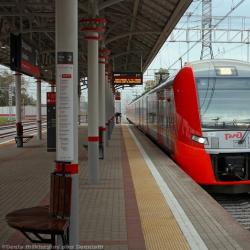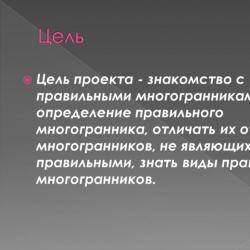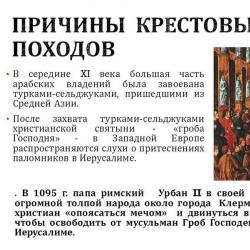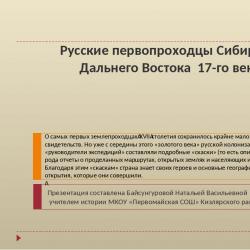New MCC ring. Everything you need to know about the Moscow Central Ring. TPU Train Timetable Verkhnie Kotly
In Moscow, work is being completed on the commissioning of MKZhD stations. The traffic on the renewed small ring will start next year. Several facilities have already been integrated into the city's transport infrastructure. It is assumed that the road will become one with the metropolitan subway. This information was announced by the Deputy Head of the Department of Transport Hamid Bulatov. According to the official, the passengers themselves will not even feel the difference, because they will be able to use a single ticket.
The MKZHD will include 31 stops, of which 21 points will have a full-fledged traffic interchange network, and at 17 stop pavilions, passengers will be able to switch to the usual line. At 9 stops, they organize the possibility of transferring to all operating directions of suburban trains, except for Kyiv. The small MKZH ring will significantly reduce all flows of metro lines and provide the possibility of delivering passengers to the main metropolitan highways.
MKZD scheme
To enlarge an image, open it in a new tab.
Stations of the Moscow ring railway will be added to the metro scheme in September 2016. A map may also appear indicating the radial directions of the railway tracks, such an innovation does not exclude the director of the Moscow Railway, Alexei Zotov.
According to preliminary estimates, the planned passenger traffic of the Moscow Ring Road in 2017 will be 75 million people, and by 2020 it will grow by 2.3 times to 170 million passengers. The interval in the movement of railway transport will depend on the demand of the citizens. If the Moscow Ring Railway becomes popular with passengers, the interval is planned to be reduced to two minutes.
So, I decided not to shelve this matter, and yesterday, after work, I joined. I didn’t drive along the full ring, there was no time, but I mastered three quarters of it - from Vladykino to Izmailovo.
Well, what can I say? So far, it is obvious that this is an attraction of pure water, approximately like the Moscow monorail immediately after its opening, which was then officially working "in excursion mode." Only the monorail was paid, but the MCC was not, which is what the vast majority of its passengers use. But first things first.
What we liked: Trains! You can laugh at me, but yesterday I rode the "Swallow" for the first time. Very smooth acceleration and quiet, in terms of sound, movement. On the move, you hear not the sound of traction engines, not the howling of gears, not the knock of compressors - but only the grinding of the wheel flange against the rails in curves. Well, even at high speed, the wobbling of the wagon is felt. But, by and large, in comparison with those ER1 ED4M, which we ride - heaven and earth. In general, comparing Siemens Desiro Rus and the crafts of the Demikhovsky plant is like comparing black sturgeon caviar with capelin caviar.

Navigation at the stations is fully present (however, in some places they did not replace the plates with the original names, which were changed during the construction process). But, in general, everything is clear and intelligible:


Escalators work at all stations where I have been - which is important, given that the route of the District Railway, historically, is located on high embankments for almost its entire length.
What did not like: The whole MCC is still very, very raw. It’s good to finish it for at least another two months - but we have assault and window dressing at the forefront, so ... Many stations have not completed the actual exits to the city - for me, for example, to get to the platform from Dmitrovsky highway, I had to walk past the Okruzhnaya platform, because the entrance to it is open only from the inside of the ring, and walk to the next Vladykino station. There is a transition to the outer side on Okruzhnaya - but it has not yet been completed, and is closed. The "wild" crossing that used to be here was blocked with fences - however, the citizens have already made holes in them ... you have to cross the piece of iron, but go around a kilometer - no fools. The same thing happened at the exit - and I went out to Izmailovo: direct access to the Partizanskaya metro station is still being completed, so citizens are forced to use the only exit towards Tkatskaya Street, and make a detour under the overpasses of the MK MZhD and the fourth ring. Three hundred meters in a straight line, and six hundred along the existing route - there is a difference.
Secondly, as many have noted, there really are not enough informant announcements on which side the platform to which the train arrives is located. On the MCC, the platforms are mainly coastal, but about a quarter are island ones. Until the train pulls up directly to the platform, it is not visible. As a result, getting out rush from one side of the car to the other. Over time, of course, they will remember where everything is located, and they will get used to it - as they are already accustomed to pressing the buttons on the doors so that they open - but now this is noticeably lacking.
The third is the name. What means Moscow Central Circle? And where is the Moscow non-central ring? There was a normal name - the Moscow District Railway, historical, and understandable to everyone: BMO is BMO, it is in the region, and Okruzhnaya is in Moscow. But no. EM CE KA. The Central Committee of some EM. The combination of three consonants is terrible.
Well, the fourth thing I don't like about the MCC - but this is my personal IMHO: the organization of a purely ring traffic. MK MZhD has a connection with all radial railway lines of the Moscow junction, including those that do not have a through diametric passage: Kazansky, Kievsky, Paveletsky and Yaroslavsky. Nothing prevents some of the trains from these directions from running not to their dead-end stations, but in transit through the ring to another radius. Part, not all - let one train out of five - ten. Especially considering the desire of the Moscow Region authorities and Russian Railways to increase the pairing of suburban electric trains under the slogan of turning them into some kind of "light metro" (the term, in this case, is absolutely illiterate, but I will use it in relation to the situation). Yes, this will complicate the scheduling, make it necessary to match the schedules of different directions - but nothing is impossible. After all, the New York subway has been operating on the same route pattern for many decades. Of course, someone will object to me that this is a utopia - my dears, about ten years ago, passenger traffic itself along the Small Ring was also considered a utopia. However...

Will they use: Definitely, they will. First of all, those who work or live within walking distance of the ring stations. I myself, if I still lived on Kutuzovsky Prospekt, would absolutely use it - my home is right opposite the platform:

It is much more difficult with transfer trips - so far, convenient transfers to the MCC can be counted on the fingers of one hand - Leninsky Prospekt - Gagarin Square, Kutuzovskaya, Vladykino, Cherkizovskaya - Lokomotiv - well, perhaps that's all. With transfers to trains and ground transport, it is even more difficult. Perhaps, when all this is brought in accordance with the plans, the passenger flow will settle down. Again, using the ring for travel is convenient only if the route that runs through it is a quarter, a maximum of a third of the length of the ring. If more, then it is much more convenient to drive in a straight line, especially since there is almost always such an opportunity. Well, now 80-90% of passengers are exclusively curious citizens. Including, transport freaks - freaks, loudly, for the whole car or platform, discussing the advantages and disadvantages of electric trains of the ES2G class compared to trains of the ET2M series, for example :) But someone has already fully appreciated the innovation, and uses it in a direct - transport - destination:

True, these are mostly young people, who are seven miles away from the transfer - not a detour :) Interestingly, I noticed that there are much more passengers on trains following the inner side of the ring than those that go along the outer one. Well, and - for me personally, the MCC is neither to the village nor to the city, at least at the present time.
About the views from the train window: Let's be objective: since the construction of the District Railway in 1908, it has been the center of attraction for industrial zones that have been built around it for seventy (I repeat: SEVENTY) years. And overnight they, and the entourage that accompanies them, will not go anywhere, even though they try to bashfully cover them with fences:

No, I do not argue that the railway also passes by quite beautiful places in Moscow: in Luzhniki, for example, this is the Novodevichy Convent, and the Luzhniki sports complex itself; in Izmailovo - the hotel complex of the same name, and the Izmailovo Fair, with its popular Kremlin; post-war development in the area of the Oktyabrsky field; beautiful views open up from the bridges across the Moscow River, the Belokamennaya station is generally located in the forest, and not just in the forest, but in the Losiny Ostrov National Nature Park; and someone likes the skyscrapers of the City:


But, in eighty percent of cases, the surrounding landscape from the window will look like this:
So if you love aesthetics ebeney- industrial zones, garages, and multi-level transport interchanges - you will certainly enjoy a trip around the MCC. Just hurry - with the current pace of Moscow urban planning, they will soon be exhausted for the most part.
My impressions. Of course, I liked it more than I didn’t like it, judging by a five-point scale :) Already one thing - a ride on an electric train along the legendary Okruzhnaya Railway, on which passenger trains have not run for more than eighty years - is worth a lot. Of course, the jambs are very striking. But there is no doubt that they will be corrected. The main thing is not to forget about the little things.

It’s good that the ring was not turned into a purely passenger one, a complete analogue of the metro, as some radical comrades suggested: after all, the original purpose of the District Railway - to connect all Moscow railway radii - is a strategic thing, and should have remained untouched. Again, variety for the railroad fans ;)

More from what I've seen. The MCC has its own Moscow time:

Business center station, with its vigorous green color:

The canopy over the platform is connected to the walls in such a way that during rain, water will be poured into the station. Is that how it's meant to be?

When I was at the Kutuzovskaya station, two hard workers dragged, right across the tracks, some hefty electric box, and threw it onto the platform, in its narrowest place. A minute later, the Swallow arrived on the same path, disembarking passengers who had to step over this box, or squeeze between it and the wall. That is, with ensuring the safety of both employees and passengers at the MCC, so far, complete seams. I would like to hope that this will not lead to serious consequences.
Something like that. Of course, I plan to drive around the MCC more thoughtfully, and during daylight hours. And then in the dark around you can’t see anything at all :)

In the meantime, I voiced my first impressions from his visit. So all of the above is just my personal subjective opinion.

Yes, and: a note for those who are in the subject;) In my passport in the column "Place of birth" is written "city of Moscow". And on my father's side, I'm a Muscovite in the third generation;)
Surely many have heard about the imminent launch of passenger traffic on the Moscow Ring Railway. But although the abbreviation MKZHD has recently been heard from all the irons controlled by the mayor's office, it is not at all easy to find brief information on the main issues of interest to a potential passenger in one place. I came across this when I recently prepared one publication on this topic. Therefore, since I had to find and collect all this information (from the portal of the mayor's office, the websites of the Russian Railways and the Moscow Ring Road, and from the messages of the m24.ru publication owned by the city government), I decided to make a small overview post about the Moscow Ring Road as a whole and dwell separately on what will change launch of passenger traffic along the ring for residents of Zelenograd and other settlements of the Leningrad direction.
MKZD scheme. Image from m24.ru
First, two words about history. The Small Ring of the Moscow Railway (this is how the Moscow Ring Road was correctly called until recently) was built in 1903-1908. The road was originally intended for intracity and transit freight traffic, but at first it also carried passenger traffic, which was discontinued in 1934.
The return of passenger traffic to the MKZhD was discussed almost immediately after the arrival of Sobyanin, and much earlier dates for its launch were initially called. But, apparently, the project required a much more serious reconstruction of the infrastructure than it seemed necessary at first glance, and its implementation dragged on for more than five years. The trains are expected to open in September 2016.
Moscow Ring Road station "Luzhniki". Image from the website of the Moscow construction complex
As you can see in the diagrams, the Moscow Ring Road in different sections has a different distance from the center: somewhere the road comes close to the metro ring line, somewhere it moves away from it at a decent distance. There will be 31 stations on the Moscow Ring Road, which will provide 17 transfers to 11 metro lines (including the future second subway ring) and 10 transfers to 9 radial directions of the railway. The issue of building the 32nd station, Presnya, which is marked on some diagrams, is planned to be resolved later. I will add that one station, Gagarin Square on Leninsky Prospekt, will be underground - the rest will be above ground. I also note that the names of some stops, in my opinion, are still floating, so do not be surprised if you suddenly find some inconsistencies on the diagrams.
Scheme of transfers from the Moscow Ring Road to the metro. Image from the website of the Moscow construction complex
Perspective (for 2020) metro and MKZD scheme. Image from the website of the Moscow construction complex
In fact, the Moscow Ring Railway will become a ring line of the city electric train, integrated into the metro system. It will be possible to pay for travel on the ground ring with a metro ticket. At the same time, a transfer between the Moscow Ring Road and the subway will be free for the passenger if he keeps within 15 minutes. Well, that is, apparently, both on the Moscow Ring Road and in the metro you will have to go through the turnstiles, but if you don’t take a walk between them, the money (trips) will not be written off when you re-enter.
Lastochka will be used as rolling stock on the ground ring. It is stated that during "peak hours" they will walk at intervals of no more than 6 minutes, and in the future the intervals may be reduced.

High-speed electric train of increased comfort "Lastochka". Photo Infoportal of Zelenograd
Now, briefly about the transfer from the Moscow Ring Railway to the Leningrad direction. It will be carried out through the NATI platform, which until recently was the deadliest stopping point between Moscow and Zelenograd. The phrase “the train follows with all stops except NATI” in the minds of passengers meant “with all stops”, because no one stopped at NATI anyway. :) Now this platform promises to live a new life.
The thing is that 350 meters from it (if you count in a straight line), there is the Nikolaevskaya station of the Moscow Ring Railway. These two stopping points will be combined into a transport interchange hub, for the construction of which the Moscow City Planning and Land Commission recently allocated a plot of 0.38 hectares. According to Moskomstroyinvest, in addition to the transport terminal, it will house areas for consumer services, catering, and vehicle maintenance. How all this will look like, I don’t know for sure. I can appeal only to the pictures from the MKZD website, the relevance of which I am not sure.
The TPU scheme, for example, dates back exactly to 2013 - perhaps everything has changed in plans since then.
I also don’t know how things are with construction, but I strongly doubt that by September there will be such a healthy transport hub building with transitions, because the announcement of the allocation of land for construction took place only a few months ago. However, no matter when and in what form this transfer hub is built, the opportunity to transfer from NATI to the Moscow Ring Road should appear as early as September of this year. This means that Zelenograd residents (and our neighbors in the Leningrad direction) will have new options for laying routes to many districts of Moscow.
* On Instagram - https://www.instagram.com/_pashalena_/ where we inspire travel with photos and stories.
* In telegram - https://t.me/iz_drugogo_testa , where we write about how people live in different cities and countries.
See you;)
While we were riding around the Caucasus, Transcaucasia and Iran, a miracle happened in Moscow - traffic and all stations of the Moscow Central Ring (MCC) were opened. Yesterday we drove a full circle on a new mode of transport and are shocked to the core. Read under the cut why the MCC is a real miracle.
We decided to start the inspection of a new type of transport from the station closest to us - Baltiyskaya, which can be reached by walking down the street from the Voykovskaya metro station.
We left the subway, crossed the road following the signs and got a little lost.

Looking back, are we sure we're going where we need to go? In Moscow, as a rule, pronounced flows of people move towards the stations, but here, it seems, people are in a hurry to shop at Metropolis :) How do you like the New Year tree at the shopping center?

It's good that Pasha knows where the railway passes. We go straight without signs. By the way, later it turns out that the main path lies through the shopping center.

We reached the footbridge across the road. To get to the bridge, you need to enter the shopping center through one of the entrances, where a sign meets us.

This is not the exit from the shopping center, this is the most popular entrance to the bridge leading to the MCC station. There is another one, but it is located inconspicuously and almost no one walks through it. We do not know how it was possible to lobby for this, but the shopping center traffic should now increase significantly.

It's nice to walk on a new clean transition.


We pass through the turnstiles to the station, bringing the Troika card, which was used in the metro, to the reader. Our trip counts as a transfer, and the trip to the MCC will be free.

The Moscow railway ring has existed since the 19th century, and until the 30s of the 20th century it was used not only for freight, but also for passenger traffic. But then the metro appeared, and the project was abandoned. In those years, the word "metro" was still masculine.
See the photo, a girl with bare legs at minus 10. Where are the parents looking? Previously, they only took off their hats when they left the house, and now they also turn up their pants.

While Pasha was looking at the diagram in the center of the station, a woman came up and tried to figure out how far one of the MCC stations in the south was from the metro station.

The long-awaited Lastochka is a Siemens train, created by the Germans on the order of Russian Railways and adapted to the requirements of our roads. Russians have been riding the Lastochka for a long time in Sochi, Nizhny Novgorod and since last year in Tver.

According to our observations, quite a lot of people use the MCC even in the middle of a weekday.

It's great that we managed to purchase such modern trains for urban public transport. The train is warm, light, Wi-Fi works, it is clean and comfortable to sit in, and there is even a toilet in the first and last cars. Well, why not a miracle!

Lastochka is a class of urban transport comfort that has never been seen before in Russia. The car has excellent sound insulation, which adds to the "luxury". The train is not moving, but flying!

We pass mostly industrial zones.

And this station is named after the street of the same name in the west of Moscow.

The display shows not only the time and temperature, but also the speed. In some areas, the Swallow accelerates to 100 km / h. We choose the MCC, and you stay in :)

There is even such a shelf. What would it be used for? :)

We pass Moscow City and the Moscow River. Correct endings? :)


The design of the stations is mostly standard, all have a scoreboard and a roof from the rain. Of the minuses: you have to wait for the train on the street, and the traffic interval varies from about ten minutes in the early morning, afternoon and late evening to three minutes at peak hours. Ten minutes in the cold is not for everyone.


Metro map at the station from Lebedev Studio.

Approximately half of the MCC stations have ground crossings to the nearest metro or railway stations. At the Baltiyskaya, where we boarded, the transfer took about ten minutes. The transition from the Luzhniki station to the Sportivnaya metro station will take only a couple of minutes, here the passengers are lucky.


In the distance, the towers of the Business Center are visible in the haze. There is also a ring station there.

The train has arrived, let's move on. The first and last cars are equipped with places for transporting bicycles. We have already figured out how we will go for a ride in Moscow parks in the summer: Izmailovsky Park and Sokolniki are in pleasant proximity to the MCC stations.

In the area of the ZIL plant, a grandiose demolition of houses and the construction of new real estate is taking place.




It is very unusual to see a toilet in public transport in Moscow.

Inside the toilet is not the first freshness, but so far tolerable. We hope that trains and stations will be constantly looked after, otherwise all this will very quickly get dirty in the literal and figurative sense.

Toilet selfie from Lena. Our first report from Zlatoglavaya, by the way. We think what else to take pictures in Moscow, write your recommendations.

We arrived at the Izmailovo station, decided to take a break and take a walk into the city. We leave the doors of the ring station.

Tickets can be bought from vending machines, like in the subway.

We get into the station building, where there will soon be a shopping center.

Now the shops are closed, and this can go on for quite some time. Russian Railways has a talent for long-term construction; at the Leningradsky railway station, the installation of new pavilions takes years.

The width of the escalator is such that only one person will fit in the width, you can’t run quickly on the left.

Entrance to the transition.

Russian realities: the handlers designed the passage in such a way that it would not be possible to open the outer door.

It is cold in the passage, but it is clear that it is too expensive to heat the street.

Near the building of the hotel "Izmailovo" and the Izmailovsky Kremlin.

We leave the passage, go straight, and there is some homeless shopping center and they sell sausages in dough. Moscow, you are infinitely diverse :)

As an epilogue:
Never in our memory has a new mode of transport been opened in Moscow (monorail does not count). Probably, it will never open again, such miracles do not happen so often.
We ourselves tried to come up with useful routes around Moscow for the MCC, but apart from transporting bikes to forest parks, we couldn’t think of anything, all our routes will remain on the metro, minibuses and electric trains. We hope that Muscovites and guests of the capital will be able to adapt this type of transport to their needs, and this will at least slightly relieve the Moscow metro and commuter trains.
What do you think of MCC?
Hello! This log will no longer be updated. If you are interested in our posts, join us:
* On Instagram -
You have probably already paid attention to the new scheme that appeared in the Moscow metro on December 21, 2015. The scheme now has a new ring with an abbreviation that is not quite usual for the metro. MKZHD - Moscow Ring Railway - is another ring in Moscow, which is designed to unload the ever-growing passenger traffic of the capital.
Why is the railway line diagram present on the metro map?
It is explained simply. MKZHD, scheduled for launch in autumn 2016, will form a single transport hub with the Moscow Metro. Another type of land transport will appear in Moscow - city train, closely linked to the metro infrastructure and existing railway stations. This type of public transport is widely used in major cities around the world.
Of the 31 stations of the Moscow Ring Road, at 17 it will be possible to transfer to the metro, and practically without going outside, since the crossings connecting the railway stations and the metro stations will be covered and form a single transport terminal - Transport Interchange Hubs (TPU). At 10 stations there will be transfers to other railway stations.

The fare will be the same as in the subway. You don't have to pay anything for a transfer.
Trains of a new type from 5 to 10 wagons with a convenient tambourless design will run along the Moscow Ring Railway. Estimated capacity will be at least 1250 people. The head cars will be equipped with seats for persons with disabilities and a system for boarding and disembarking people in wheelchairs.
The trains will also have WI-FI with free internet, tinted windows, information boards in different languages, and a climate control system. The head car will have a toilet for passengers and the locomotive crew.

At the stations, parking lots will be created for motorists changing to electric trains.
And finally, the best part - planned traffic interval - 6 minutes!
January 2016
The Moscow Central Circle of the MCC is the official name of the new transport system that is opening today. Adjustments have been made to the intervals of trains - 15 minutes, and during peak hours - 6 minutes. Out of 31 stations, 26 are opening today - Vladykino, Botanical Garden, Rostokino, Belokamennaya, Rokossovsky Boulevard, Lokomotiv, Izmailovo, Enthusiasts Highway, Andronovka, Nizhegorodskaya, Novokhokhlovskaya, Ugreshskaya, Avtozavodskaya, ZIL, Verkhnie Kotly, Krymskaya, Gagarin Square, Luzhniki, Kutuzovskaya, Business Center, Shelepikha, Khoroshevo, Streshnevo, Baltic, Likhobory, Okruzhnaya. The remaining 5 - Dubrovka, Zorge, Falcon Mountain, Koptevo and Panfilovskaya - will open at the end of the year.






